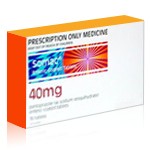Reflux Esophagitis: A Comprehensive Overview


Reflux esophagitis is a common gastrointestinal condition with potentially serious implications if left untreated. It is a manifestation of chronic gastroesophageal reflux disease (GERD), where the esophageal lining becomes inflamed due to prolonged exposure to stomach acid. Understanding the mechanisms, progression, diagnosis, and treatment options is crucial in managing this condition effectively.
What is Reflux Esophagitis?
Reflux esophagitis is an inflammatory condition of the esophagus that occurs when stomach contents, particularly acid, flow backward into the esophagus. The esophagus is not equipped to handle the corrosive nature of gastric acids, which are normally confined to the stomach where they aid digestion. Over time, repeated exposure to acid leads to damage of the esophageal mucosa, resulting in inflammation, discomfort, and, in more advanced cases, ulceration or strictures.
This condition often presents with symptoms such as heartburn, regurgitation of food or sour liquid, difficulty swallowing, chest pain, and a sensation of a lump in the throat. The severity of symptoms can vary depending on the extent of esophageal damage and the frequency of acid reflux episodes.
What Causes Esophageal Reflux?
The underlying cause of esophageal reflux is the dysfunction of the lower esophageal sphincter (LES), a muscular ring at the junction of the esophagus and stomach. Under normal circumstances, the LES acts as a valve, opening to allow food into the stomach and closing tightly afterward to prevent gastric contents from moving backward. In cases of reflux, this sphincter becomes weakened or relaxes inappropriately, allowing acid to escape into the esophagus.
Several contributing factors can lead to or exacerbate LES dysfunction. Obesity increases intra-abdominal pressure, pushing stomach contents upward. Certain dietary choices—such as consuming fatty foods, caffeine, chocolate, and alcohol—can relax the LES. Smoking also contributes to LES weakness. Additionally, hiatal hernia, a condition where part of the stomach moves above the diaphragm, can compromise LES function. Other risk factors include pregnancy, delayed gastric emptying, and certain medications like NSAIDs and calcium channel blockers.
What is Stage 3 Reflux Esophagitis?
Reflux esophagitis is graded using the Los Angeles (LA) Classification System, which ranges from Grade A (mild) to Grade D (severe). Stage 3, or Grade C, indicates moderate to severe inflammation and damage.
In Grade C reflux esophagitis, there are mucosal breaks that extend between the tops of two or more mucosal folds, but involve less than 75% of the esophageal circumference. These erosions are more extensive than in Grades A or B and are indicative of more prolonged or severe acid exposure.
Patients with Stage 3 esophagitis typically experience persistent symptoms and may begin to suffer from complications such as esophageal ulcers or early stricture formation. Prompt medical intervention is crucial at this stage to prevent progression and to improve quality of life.
How is Esophagitis Diagnosed?
Diagnosis of reflux esophagitis involves a combination of clinical evaluation, patient history, and diagnostic testing. The gold standard for confirming esophagitis is esophagogastroduodenoscopy (EGD), commonly known as upper endoscopy. During this procedure, a flexible tube with a camera is inserted through the mouth to visualize the esophagus, stomach, and upper small intestine. The gastroenterologist looks for signs of inflammation, erosions, ulcers, or strictures and may take biopsies to rule out other causes such as infection or eosinophilic esophagitis.
In addition to endoscopy, a 24-hour pH monitoring test may be used to measure acid exposure in the esophagus. This involves placing a small probe in the esophagus to record acid levels over a full day. This test is particularly useful in patients who have symptoms of reflux but no visible esophagitis on endoscopy.
Another helpful diagnostic tool is esophageal manometry, which measures the pressure and coordination of esophageal muscles, including the LES. This test can help identify motility disorders that might contribute to reflux symptoms.
What are the Complications of Reflux Esophagitis?
If untreated or inadequately managed, reflux esophagitis can lead to several complications, some of which can be serious or even life-threatening. Persistent inflammation may result in esophageal ulcers, which are painful sores that can bleed and lead to anemia. Over time, repeated damage and healing cycles can cause esophageal strictures, which are narrowed segments that make swallowing difficult and can trap food.
One of the most concerning long-term complications is Barrett’s esophagus, a condition in which the normal squamous epithelium of the esophagus is replaced with columnar epithelium, similar to that of the stomach. This metaplastic change is considered a precancerous condition because it increases the risk of developing esophageal adenocarcinoma, a particularly aggressive form of cancer.
Chronic esophagitis may also negatively impact quality of life, contributing to persistent discomfort, poor sleep due to nocturnal symptoms, dietary restrictions, and anxiety over symptom management.
The Role of Protonix in the Treatment of Reflux Esophagitis
Protonix (generic name: pantoprazole) plays a central role in the treatment of reflux esophagitis. It belongs to a class of drugs called proton pump inhibitors (PPIs), which are the most effective agents for suppressing gastric acid production. PPIs work by irreversibly blocking the hydrogen-potassium ATPase enzyme system (the proton pump) in the gastric parietal cells, thereby reducing the secretion of hydrochloric acid.
In cases of Stage 3 esophagitis, PPIs like Protonix are essential to allow the damaged esophageal lining to heal and to prevent further injury. They are typically prescribed once or twice daily, depending on symptom severity and response to treatment. Protonix is often taken 30–60 minutes before meals to optimize its efficacy, as proton pumps are most active during digestion.
One of the advantages of Protonix is its availability in both oral and intravenous forms, making it suitable for both outpatient and hospital settings, especially in patients who cannot take oral medications or are experiencing severe symptoms requiring inpatient care.
Long-term use of PPIs, while effective, must be monitored carefully. There are concerns about potential side effects, including nutrient malabsorption (such as magnesium, calcium, and vitamin B12), increased risk of bone fractures, kidney disease, and gastrointestinal infections like Clostridium difficile. Therefore, the goal is to use the lowest effective dose for the shortest necessary duration, although some patients with severe or chronic reflux may require ongoing therapy.
In addition to medication, lifestyle modifications are often recommended to enhance treatment outcomes. These may include weight loss, dietary adjustments, elevating the head of the bed, avoiding meals close to bedtime, and reducing intake of substances known to trigger reflux.
Conclusion
Reflux esophagitis is a prevalent and potentially serious condition stemming from chronic acid reflux. Understanding its pathophysiology, recognizing its symptoms, and employing a structured diagnostic approach are key steps in its management. The progression to Stage 3 esophagitis marks a more severe form that requires aggressive treatment to prevent complications.Protonix, as a potent acid-suppressing agent, remains a cornerstone in the treatment of this condition. Its effectiveness in promoting mucosal healing, alleviating symptoms, and reducing acid exposure makes it an invaluable tool in both short-term relief and long-term management.Nevertheless, treatment should be individualized, taking into account symptom severity, endoscopic findings, and patient preferences. As with all chronic conditions, ongoing patient education and follow-up are essential for ensuring sustained well-being and preventing the recurrence of esophageal injury.
Medically Reviewed by Dr. Rabeea Aboufakher, MD
(Updated at Apr 4 / 2025)

